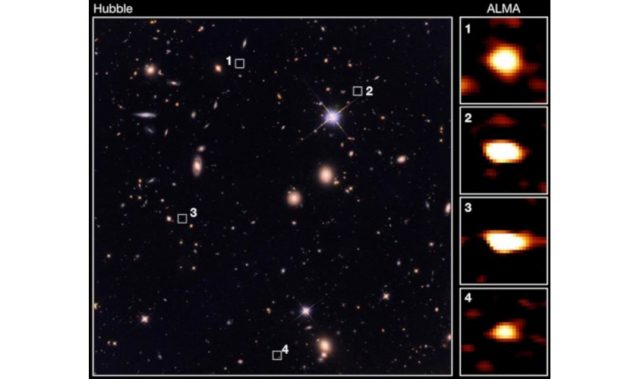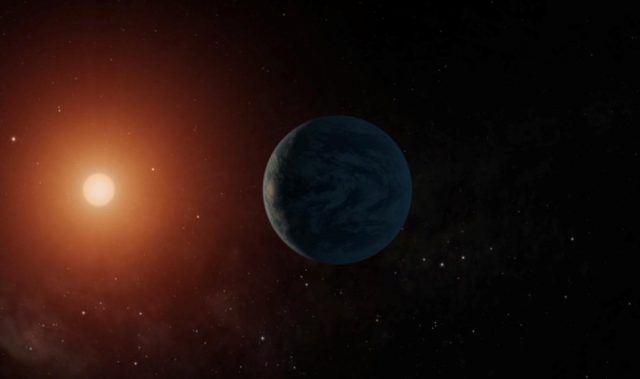
AsianScientist (Feb. 23, 2017) – The dark, reddish whale-shaped region along Pluto’s equator is the sign of a large collision that once hit the distant planet. These findings have been published in Nature Astronomy.
Pluto is a dwarf planet with a diameter of 2,400 km orbiting in the Kuiper belt, a ring of bodies beyond Neptune. Since Pluto is about thirty times farther from the sun than we are, it is seen only as a tiny point of light even with huge telescopes. Thus, much about Pluto remains a mystery and it the last unexplored frontier in our solar system.
After a nine-year voyage, NASA’s New Horizons spacecraft flew past Pluto in August 2015 and sent us amazing images of the mysterious planet. Many researchers had imagined that Pluto was a deadly boring icy body, but it was revealed to have a wide variety of geological features such as a heart-shaped fresh basin, heavily cratered old regions, and icy volcanos.
The most eye-catching feature is the dark and reddish whale-shaped region called Cthulhu Regio, which lies on Pluto’s equator. Spectroscopic data by the spacecraft indicates the existence of a mixture of water ice and dark high polymer organic matters in this region. Since Cthulhu Regio is so huge (3,000km long and 300km wide), large-scale physical and chemical process should have been involved in its formation. However, exactly how Cthulhu Regio was formed remains unknown.

To find some answers, researchers from the University of Tokyo and Tokyo Institute of Technology focused on Charon, a huge satellite about half Pluto’s size orbiting the planet. The giant impact hypothesis proposes that Charon was formed by a collision between Pluto and an unknown celestial body. The team, led by Associate Professor Yasuhito Sekine, examined the possibility that the Charon-forming giant impact also created Cthulhu Regio.
Sekine prepared water solutions containing simple organic compounds that are typically found in comets—and should therefore be contained in Pluto—such as formaldehyde and ammonia. Then he conducted heating experiments of these water solutions, and found that the color changed from colorless and transparent to dark and reddish owing to the synthesis of complex organic materials after heating at greater than 50°C for several months. The visible and near infrared spectra of these heated solutions resemble those of Pluto’s dark equatorial regions.
Associate Professor Hidenori Genda then carried out 180 simulations of giant impacts on Pluto using the TSUBAME supercomputer and found that the Charon-forming giant impact can create a huge (~ 3,000km long and ~ 300km wide) and hot (greater than 50°C) water pool near Pluto’s equator in most cases. Since the hot water pool cools down over a period of more than 1,000 years, the synthesis of complex organic materials proceeds efficiently and these regions should turn dark and reddish.
From the heating experiments and numerical simulations, the researchers concluded that the dark and reddish whale-shaped region observed by the New Horizons spacecraft is the first material evidence of a giant impact on Pluto.
They also pointed out that the wide variety of observed surface colors among Kuiper belt objects, such as Makemake, Sedona, and Eris, can be explained by the stochasticity of giant impact events with different impact conditions. The researchers concluded that giant impact events are more ubiquitous than previously thought, from the innermost sections of our solar system to its most distant fringes.
The article can be found at: Sekine et al. (2017) The Charon-forming Giant Impact as a Source of Pluto’s Dark Equatorial Regions.
———
Source: Tokyo Institute of Technology; Photo: NASA/JPL.
Disclaimer: This article does not necessarily reflect the views of AsianScientist or its staff.












